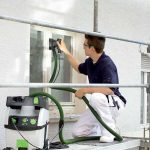Painting and Decorating in Healthcare Environments
 Bagnalls, the commercial P&D contrator, shares its insights into the special considerations required when carrying our jobs in hospitals and other healthcare buildings:
Bagnalls, the commercial P&D contrator, shares its insights into the special considerations required when carrying our jobs in hospitals and other healthcare buildings:
When painting and decorating in hospitals or healthcare environments, it’s important to consider hygiene and the spread of bacteria. These environments need to be kept looking presentable, but also any decorating needs to be able to withstand the rigorous cleaning necessary to uphold the high standards of hygiene.
The importance of hygiene
It’s imperative to maintain a hygienic environment in healthcare facilities. In areas where patients have weakened immune systems, it’s important to create a hygienic environment which will not allow the spread of disease within the hospital. Even the slightest oversight in hygiene could worsen the health of a vulnerable patient.
Cleaning methods
A variety of cleaning methods are needed within hospitals, doctor’s surgeries and care homes to assure high levels of hygiene. Cleaning in these environments takes place usually at least once daily through antibacterial cleaning solutions, steam cleaning and mopping; the NHS requirements state that “all surfaces should be visibly clean”. Whilst this is normally carried out through thorough cleaning using detergent and water, sometimes this may not be enough. Heat and chemical disinfectants are necessary for certain cases where greater risk is present.
 Building integrity
Building integrity
Whilst regular cleaning using the appropriate solutions is key to maintaining hygiene, this cleaning process can take its toll on a building. As a painter and decorator, it’s important to consider the materials you use and whether they can withstand the impact of regular cleaning.
Specialist wall coatings have been developed to withstand rigorous scrubbing and even steam cleaning. A representative of Bagnalls commented that these products must be made and applied in a way which “can withstand daily cleaning for many years without staining or discolouration” – no small feat given the stress these systems are placed under.
Including hygiene protection built-in
Many of these wall coatings now not only provide easy-to-clean surfaces, but also are inherently hygienic. These often include silver ion technology, which inhibits the spread of MRSA and E-Coli across the paint surface. These finishes also offer a surface which does not support the growth of mould, further helping hospitals and other health-care centres to create hygienic environments throughout a building. Such coatings are becoming popular in hospitals throughout the country as their benefits become known.
By following the above tips in addition to the required regulations, you can be sure that you’re providing a safe and hygienic service to healthcare centres.







